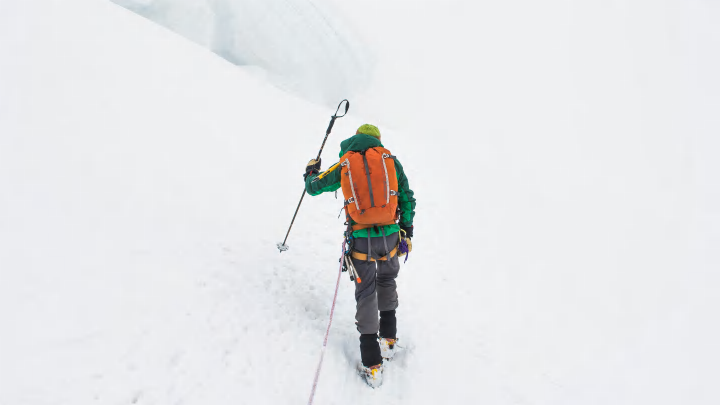How to Create a Hypothermia Wrap in the Backcountry

Hypothermia occurs when your body temperature drops below 95 degrees Fahrenheit. At this temperature, your body begins to lose its ability to function properly. Essentially, the body’s thermoregulatory system is failing, making it difficult to combat heat loss. To understand, we must familiarize ourselves with the four primary forms of heat loss: convection, conduction, evaporation, and radiation.
Convection: The transfer of heat through gas or liquid currents. Think of the wind blowing on a person, cooling their body.
Conduction: The process of heat transferring from one object to another through direct contact. For instance, laying down directly on a sheet of ice.
Evaporation: The process of a liquid changing into a gaseous state. Sweating is an example of evaporative heat loss as the sweat, which is designed to cool the body, evaporates off the skin into a gas.
Radiation: The emission of heat waves. The sun warming the earth is a form of radiation.
If you encounter someone in the backcountry who has a case of the “umbles” (mumbling, fumbling, stumbling), appears to be confused, and is wearing wet clothing and/or is in a cold environment, you may be dealing with a hypothermic patient.
While shivering tends to be a notable sign of being cold, a severely hypothermic patient will eventually stop shivering. This is due to the body running out of fuel and energy. When a patient continues to decline and stops shivering, the “Metabolic Icebox” is right around the corner, occurring when the body drops below 86 degrees Fahrenheit. Action is needed immediately.
To support a person who is in such a state, call for assistance and begin to prepare a hypothermia wrap. Steps for creating an effective and efficient hypothermia wrap include:
- Ensure all individuals, including yourself and the patient, are in a safe location, away from rapid water, rockfall, icefall, or lightning.
- Lay a large tarp or other form of waterproof layering on the ground. This will create a barrier between the patient and the ground.
- If available, lay a long piece of foam such as a sleeping pad down on the tarp for the patient to lay on. This will elevate the patient and add more insulation.
- Place a sleeping bag on the foam pad for the patient to lay in. Leave the sleeping bag unzipped so the patient can easily be placed into the sleeping bag.
- Before being placed in the dry sleeping bag, the patient will need all wet clothing removed and replaced with dry clothing. You may need to cut their clothing off to avoid moving the patient too much. The patient will then be ready to enter the sleeping bag.
- Once the patient is safely in the unzipped sleeping bag, add heat sources and additional insulation to the body’s core and major arteries. Then, zip the sleeping bag.
- Take the sides of the tarp that the patient is lying on and wrap them around the patient, ensuring that the patient's head is not covered, affecting their ability to breathe.
- Remain with the patient while assistance is on the way.
If a patient is experiencing severe hypothermia, never perform CPR as this can send them into ventricular fibrillation, a life-threatening situation in which the heart beats rapidly at an erratic rhythm.
Prevention
Prepare for the worst situations: wind and wet conditions. Avoid wearing cotton which loses its ability to insulate when wet. Rather, choose clothing that will stay warm in wet conditions such as wool and synthetics. Additionally, pack items for an unexpected overnight including a shelter system, sleeping bag, sleeping pad, and plenty of food and water.
